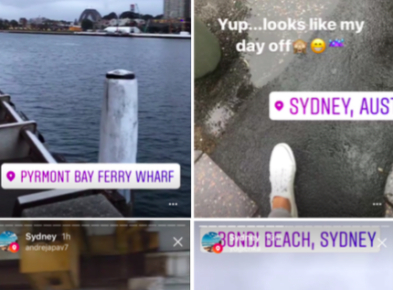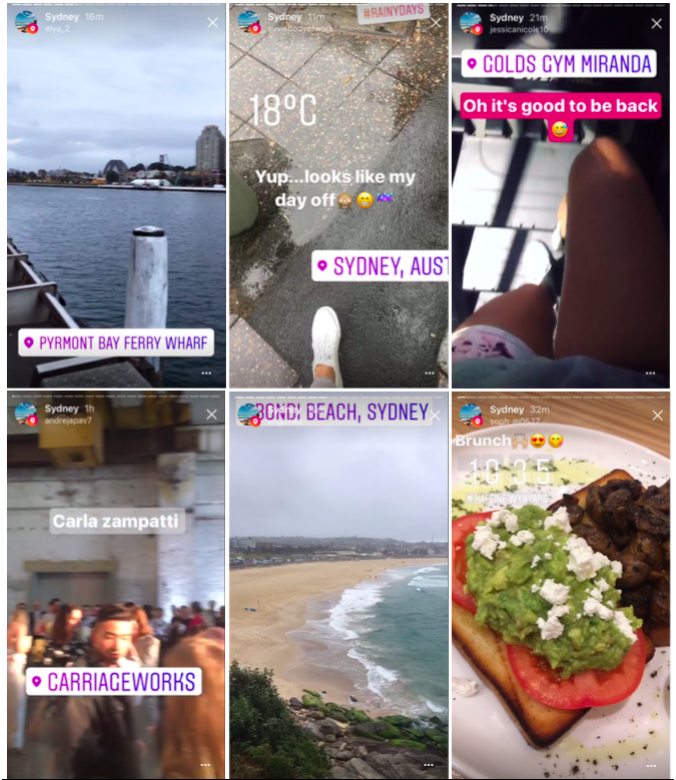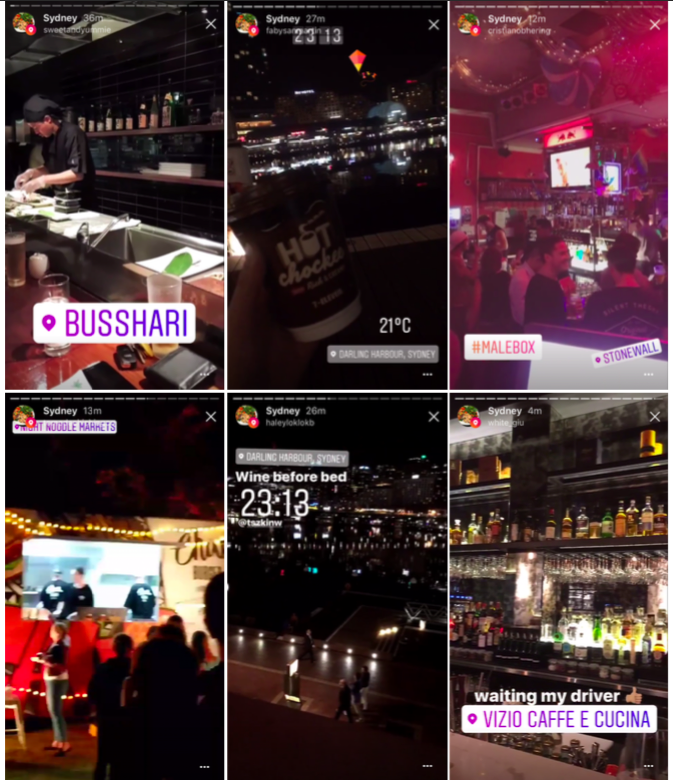thoughts

Experiencing the reterritorialized city: Instagram Stories
A lot has been written about the meaning of the local in the context of a “globalised” world. When I first became interested in what the role was of digital technologies in shaping the way people live and experience what surrounds them I decided to investigate how these technologies were changing our perception of space and place. What I found was an interesting dynamic that was twofold: digital technologies both increased a feeling of uprooting and offered myriad new possibilities to create, mold and shape our relationship to places and “the local”. Instagram stories is an incredibly interesting example of this dynamic. Before I delve into some of the details of why I think that way, let me just give a bit of background about what exactly technologies have to do with changing perceptions of place.
Uprooting and non-places in a globalised world
My first exploration of place was part of my bachelor thesis and I took Marc Augé’s essay ‘Non-Places’ as a starting point. Here, Augé coins the term ‘non-places’ to describe the observation that people spend more and more of their time in transient spaces like airports or shopping malls. According to Augé, non-places are non-places because they lack the core quality that defines a place: identity, history and relations. In airports and shopping malls, according to Augé, people remain anonymous and do not share common social references. In fact, whether they are at an airport in Paris or in San Francisco might not even matter because of the generic nature of these places (they might both have a Starbucks, designed in the exact same way and providing the exact same offers).
Now, Augé’s argument is way more differentiated than I can expose in this brief post and he acknowledges that what is a non-place for one person might not be a non-place for another person, one who might connect memories and references to that place. However, what Augé is saying is that, increasingly (bare in mind this was in 1992) non-places are taking over the lives of people. And this precise argument overlaps with much of what has been said in the literature about globalisation: that processes of globalisation create a feeling of uprooting and a felt “homelessness”. From an anthropological perspective interested in offering a complex picture of reality, this argument is of course not easy to make. It lives off the romanticised idea of a primordial village where everyone knows each other and the juxtaposition of this ideal against the notion of a anonymous city life in which even neighbours never speak or interact with one another. However, the impacts of an increasingly interconnected world are not easy to discard either.
With new technologies, the local is no longer the unique context of our experiences
Just think about how mobile phones make it possible for us to be reachable for someone, independently of our or their location. We can communicate with and speak to our friends even when we are far apart, changing thus the meaning of borders, physical distance and what it means to simply live apart. Having access to the internet contributes to these changes in important ways, too. Consuming images, content and opinions from across the world and far away places we gather the deep impression that those images give us a more complete and comprehensive picture of the world that is of matter, meaning and interest to us than our local experiences and observations ever could. With the emergence of a global or transnational public, then, local places and physical points of encounter cease to be concrete and discrete as they no longer generate the unique context of our lived experiences. Where we live and what physically surrounds us might no longer be meaningful for defining who we are or how we make sense of the world. The authority of the local experience erodes under the pressure of interconnection.
But people don’t just get lost and disoriented. Just as uprooting and homelessness start to prevail, we re-territorialise and create new meaning and new systems of reference in an interconnected world. Where home is is no longer simply defined in local terms, we use other places, real or imagined, to create a sense of intimacy and locality. And digital technologies play a huge part in this. Instagram stories, for example.

Browsing through content in explorer mode, Instagram suggests a location-based story
Instagram stories offers us a new way to see, experience and understand the city
Launched as a feature to the photo sharing application in 2016, Instagram stories allows its users to share small photo and video snippets or compilations of several snapshots and short videos that expire after 24 hours. An interesting way Instagram has made people’s stories available to other users is through the location search function. When users click the magnifier icon to explore content related to their ‘subscriptions’, a small circle with their current location appears in a top row of stories. Mine says ‘Sydney’. When I click on that rounded icon, the stories I see are not one a particular user has created or uploaded. Rather, it’s a combination of video stories of different users that Instagram automatically compiles. As with many social media apps, the algorithm and the logic of how this is created and compiled is not entirely transparent to users. The only thing that is apparent is that all of the users that appear have somehow activated and tagged their location in their published story. Instagram recognises this tag and shows what these people have filmed to other nearby users, users like me.
 Users’ stories in Sydney by day…
Users’ stories in Sydney by day…
The videos that appear are recent publications, mostly published within the last hour. I have to say, I’ve made it a bit of a habit to check these location stories regularly. Being almost in real time and showing you videos of people in different locations around the city, the story gives you an astonishing impression of what live is like for others. Just as the rhythm of city life, the content of stories shifts with times of day. People film themselves going to the gym or working out in the morning, you see lunches being eaten around the same time at noon and people in bars and parties at night.
The location-based stories show you around the city you live in through the eyes of anonymous faces, and yet, they show you familiar situations and places. Through watching these stories, users might find out what the weather is like when they are still in bed on a Saturday morning, or what the waves are like at their nearby beach before heading there themselves. They might use other people’s stories to discover new places in their cities, as they find out about an art installation or event happening at that very moment just a few minutes away from them. Or what about other places? Through the search functionality, viewing compilations of stories is not restricted to a users’ current location. By typing in any location in the world, Instagram will present a combination of strangers’ first-hand impressions of what surrounds them. It suffices to say, Instagram stories offers users new ways of experiencing, making sense of and creating meaning in places.
 .…and users’ stories in Sydney by night.
.…and users’ stories in Sydney by night.
For any researcher interested in people’s experiences in the world, Instagram stories offers myriad possibilities to study places and their lived realities. As with many of these social media offerings, privacy is of course a core concern and the ethic and moral implications of seeing people in the intimate setting of their homes in such a crude public way are not easily negated. What is true, however, is that those new ways of seeing, experiencing (and consuming) the lives of people that surround us, are also slowly changing our perceptions of public and private.
In a reversal of view points, we might say to know more than we used to about what the people that surround us are doing everyday, how they experience and make meaningful the places they live in. Experiencing the city through the eyes of others might create the very common references that Augé says are disappearing. And so, in a world where connections reach out to far-flung places, the city might just have moved a little bit closer together.